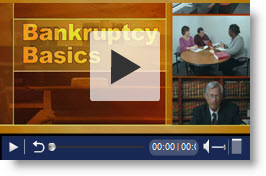 Personal or business bankruptcy can be a bitter pill to swallow. Bankruptcy can be the best solution when the amount we owe our creditors exceeds our ability to repay our financial obligations by too great an amount.
Personal or business bankruptcy can be a bitter pill to swallow. Bankruptcy can be the best solution when the amount we owe our creditors exceeds our ability to repay our financial obligations by too great an amount.
Bankruptcies have soared during the “Great Recession” (see table below) with millions filing for bankruptcy not because of some defect of character but due to economic hardship as a result of loss of income due to job loss, unforeseen medical expenses, business failure, loss of investment or pension income due to market failures or adverse legal actions.
Bankruptcy laws in the United States are intended to help individuals and companies achieve a new beginning; repaying creditors where possible or wiping the slate clean if there’s no other way. Keep in mind that you aren’t the only one who’s dealt with financial adversity with many of the most celebrated figures in politics (Abraham Lincoln), Business (Donald Trump) and Entertainment (Kim Basinger) having sought bankruptcy protection. Most of these individuals have emerged to even greater success. See this list of notable bankruptcy filers.
When You File Bankruptcy*
You can choose the kind of bankruptcy that best meets your needs (provided you meet certain qualifications):
Chapter 7 – A trustee is appointed to take over your property. Any property of value will be sold or turned into money to pay your creditors. You may be able to keep some personal items and possibly real estate depending on the law of the State where you live and applicable federal laws.
Chapter 13 – You can usually keep your property, but you must earn wages or have some other source of regular income and you must agree to pay part of your income to your creditors. The court must approve your repayment plan and your budget. A trustee is appointed and will collect the payments from you, pay your creditors, and make sure you live up to the terms of your repayment plan.
Chapter 12 – Like chapter 13, but it is only for family farmers and family fishermen.
Chapter 11 – This is used mostly by businesses. In chapter 11, you may continue to operate your business, but your creditors and the court must approve a plan to repay your debts. There is no trustee unless the judge decides that one is necessary; if a trustee is appointed, the trustee takes control of your business and property.
If you have already filed bankruptcy under chapter 7, you may be able to change your case to another chapter.
Your bankruptcy may be reported on your credit record for as long as ten years. It can affect your ability to receive credit in the future.
What Is a Bankruptcy Discharge and How Does It Operate?
One of the reasons people file bankruptcy is to get a “discharge.” A discharge is a court order which states that you do not have to pay most of your debts. Some debts cannot be discharged. For example, you cannot discharge debts for–
- most taxes;
- child support;
- alimony;
- most student loans;
- court fines and criminal restitution; and
- personal injury caused by driving drunk or under the influence of drugs.
The discharge only applies to debts that arose before the date you filed. Also, if the judge finds that you received money or property by fraud, that debt may not be discharged.
It is important to list all your property and debts in your bankruptcy schedules. If you do not list a debt, for example, it is possible the debt will not be discharged. The judge can also deny your discharge if you do something dishonest in connection with your bankruptcy case, such as destroy or hide property, falsify records, or lie, or if you disobey a court order.
You can only receive a chapter 7 discharge once every eight years. Other rules may apply if you previously received a discharge in a chapter 13 case. No one can make you pay a debt that has been discharged, but you can voluntarily pay any debt you wish to pay. You do not have to sign a reaffirmation agreement (see below) or any other kind of document to do this.
Some creditors hold a secured claim (for example, the bank that holds the mortgage on your house or the loan company that has a lien on your car). You do not have to pay a secured claim if the debt is discharged, but the creditor can still take the property.
What Is a Reaffirmation Agreement?
Even if a debt can be discharged, you may have special reasons why you want to promise to pay it. For example, you may want to work out a plan with the bank to keep your car. To promise to pay that debt, you must sign and file a reaffirmation agreement with the court. Reaffirmation agreements are under special rules and are voluntary. They are not required by bankruptcy law or by any other law. Reaffirmation agreements–
- must be voluntary;
- must not place too heavy a burden on you or your family;
- must be in your best interest; and
- can be canceled anytime before the court issues your discharge or within 60 days after the agreement is filed with the court, whichever gives you the most time.
If you are an individual and you are not represented by an attorney, the court must hold a hearing to decide whether to approve the reaffirmation agreement. The agreement will not be legally binding until the court approves it.
If you reaffirm a debt and then fail to pay it, you owe the debt the same as though there was no bankruptcy. The debt will not be discharged and the creditor can take action to recover any property on which it has a lien or mortgage. The creditor can also take legal action to recover a judgment against you.
*The above information is reprinted from The US Department of Justice, US Trustee Program Bankruptcy Information Sheet.
Number of Bankruptcies by Year and Chapter
Total Bankruptcy Filings by Bankruptcy Chapter
Calendar Years, Period Ending
December 31, 2006-2010♦
[TABLE=3]
♦ Source: Growth in Bankruptcy Filings Slows In Calendar Year 2010 (USCourts.gov)
Government Resources on Bankruptcy
The Federal Trade Commission (FTC) and the Department of Justice’s U.S. Trustee Program provides guidelines to consumers considering bankruptcy at Before You File for Personal Bankruptcy: Information About Credit Counseling and Debtor Education.
This document advises consumers about the new bankruptcy law’s requirements for credit counseling before filing for bankruptcy and debtor education after filing. It covers the important questions you need to ask when choosing a credit counselor as well as links to other government resources on bankruptcy.
Filing Bankruptcy
If you make the decision to file for bankruptcy then, most likely, you’ll want to hire a competent bankruptcy attorney. This can be an expensive proposition costing from a few hundred dollars to several thousands depending upon the available assets, size of the debt and complexity of your case.
MSN Money advises you not to randomly pick a bankruptcy attorney out of the yellow pages (or Google search listings) but instead to do the hard research in their article titled: 13 ways to avoid a bad bankruptcy attorney.
Apart from Google, Bing or the Yellow Pages you might want to consider an attorney directory site like Lawyers.com which provides extensive information on bankruptcy as well as a browsable directory of bankruptcy lawyers by location.
Do-It-Yourself Bankruptcy
Acting as your own bankruptcy attorney If your financial situation is fairly straightforward or you just like a challenge, there are any number of resources available to help you understand your bankruptcy options including which Chapter is best for you.
Start your bankruptcy education at
- Your Local Library
- Wikipedia has extensive information on Bankruptcy
- Search for Bankruptcy on Amazon.com and at Google Books
 The US Courts provides extensive information on Bankruptcy including links to
The US Courts provides extensive information on Bankruptcy including links to
- Bankruptcy Forms
- Bankruptcy Resources; and helpful
- Bankruptcy Videos covering bankruptcy basics on types of bankruptcy, Legal Assistance, Filing for bankruptcy and other information.


